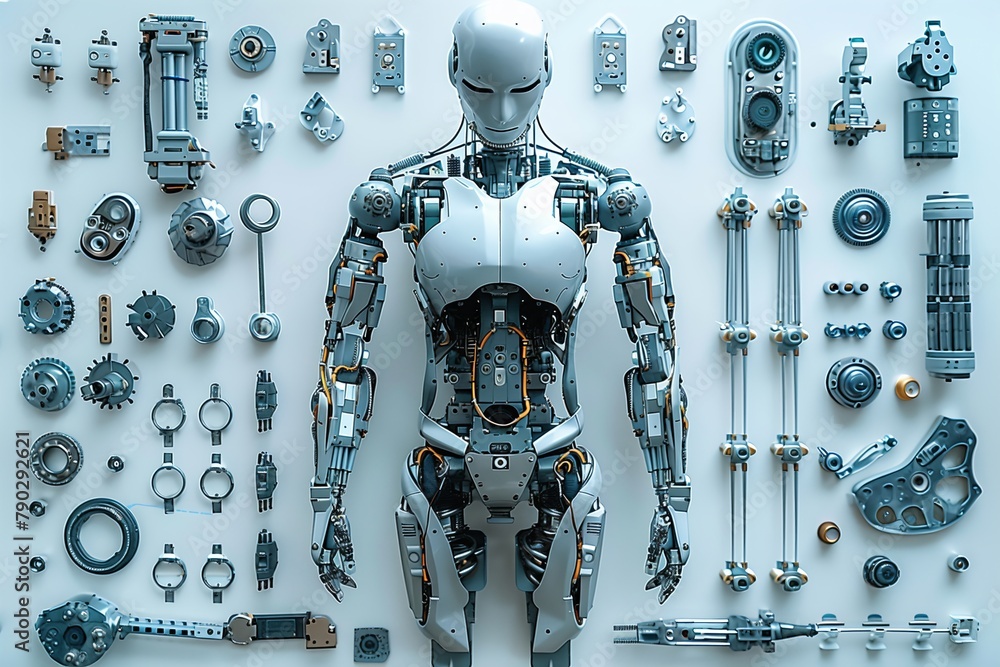A Beginner’s Guide to Understanding Key Components of Robot Parts
In the age of technology, robotics plays a crucial role in various industries. This shapes how we interact with machines and automate tasks. Understanding the key components of robot parts is essential for beginners looking to dive into this exciting and rapidly growing field.
Whether you’re interested in engineering, programming, or simply fascinated by robots, grasping the fundamentals will open up a world of possibilities. Let’s delve in the essential components of robot parts in this beginner’s guide-perfect for anyone starting their journey into robotics.
What Are Robotics?
Robotics is the branch of technology that deals with the design, construction, operation, and application of robots. These automated machines are programmed to perform specific tasks, often under human supervision. The diverse applications of robotics range from manufacturing and healthcare to space exploration and everyday household chores.
The Core Components of a Robot
Every robot consists of several core components that work together seamlessly. Familiarity with these parts is crucial for anyone eager to understand how robotics operates. Here are the key components:
- Chassis
- Actuators
- Sensors
- Computer or Controller
- Power Supply
Robots are made up of several important parts. The chassis is like the robot’s body. It holds everything together and keeps it strong and steady.
Actuators help the robot move by lifting, turning, or rolling using motors or pistons. Sensors act like the robot’s eyes and ears. This helps it understand what’s happening around it.
The computer or controller is the brain of the robot. It tells the robot what to do by reading the sensors and controlling the movements.
Lastly, robots need power to work. This comes from things like batteries or solar panels.
Understanding Robot Sensors
Sensors are a vital aspect of robotics. They collect data about the robot’s environment. This allows for intelligent responses and actions.
Various types of sensors perform different functions:
Types of Sensors in Robotics
Robots use different sensors to help them work better and stay safe. Here are some common sensors found in robots:
- Proximity Sensors
- Color Sensors
- Temperature Sensors
- Gyroscopes
Proximity sensors help robots know when something is close so they don’t bump into it. Color sensors let robots see and tell colors apart. This is useful for sorting things.
Temperature sensors help robots feel how hot or cold it is. This is important in places where the temperature changes a lot. Gyroscopes help robots know which way they are moving and help them stay balanced.
These sensors provide robots with valuable information to navigate complex environments and make decisions autonomously.
The Role of Actuators
Actuators are essential in converting energy into motion. They are responsible for every physical action a robot performs, from walking to grasping objects. Understanding how different actuators work can help in designing more effective robots.
Types of Actuators
Actuators can be divided into several types, including:
- Electric Motors
- Pneumatic Actuators
- Hydraulic Actuators
Actuators help robots move, and there are different kinds. Electric motors are used a lot because they are easy to control and great for things like moving robot arms.
Pneumatic actuators use air to make the robot move and are good for big machines. Hydraulic actuators use liquid to create strong power, so they can lift heavy things and are often used in factories.
Choosing the right actuator type is critical for a robot’s design and function.
Importance of the Power Supply
Without a reliable power supply, robots cannot operate effectively. The choice of power source impacts everything from mobility to operational time. When building or using a robot, it’s important to think about how it gets its power.
Rechargeable batteries are good for robots that need to run for a long time, while regular disposable batteries might cost less but don’t last as long. You also need to know how much power the robot needs so it doesn’t stop working by surprise.
Where the robot will be used also matters. For example, using solar panels for robots that work outside in the sun. Selecting the right power supply ensures a robot can function properly for its intended tasks and applications.
Integrating Robotics Components
Integrating all the components of a robot into a single cohesive unit is where the magic happens. This integration involves programming the controller to interpret sensor data and activate the appropriate actuators. It requires knowledge of programming languages and platforms used in robotics.
Programming Languages and Platforms
There are different computer programs that help control how robots work.
- Python
- C/C++
- ROS (Robot Operating System)
Python is a popular one because it’s easy to learn and great for beginners. C and C++ are also used when robots need to work really fast or do very important tasks.
Another tool called ROS, which stands for Robot Operating System, helps people build and run robot programs more easily. Learning these programming languages and how to use platforms like ROS can significantly boost your robotics skills.
Getting Started with Robotics
For beginners, understanding these components is the first step toward diving deep into the field of robotics. Furthermore, resources like Studica Robotics offer kits that allow you to experiment with building and programming your robots practically. Engaging with robotics clubs or online communities can also provide valuable insights and mentorship.
Embracing the Future of Robotics
Robotics continues to evolve quickly. This makes it an exciting time to get involved. Whether you aspire to design robots, program them, or utilize them in various industries, the knowledge of their components will be invaluable.
By starting your journey with a solid understanding of robotics, you set the stage for endless opportunities and innovations.
Your Path Forward in Robotics
Understanding the key components of robot parts is vital for anyone interested in the field of robotics. With knowledge about actuators, sensors, and the importance of power supply, you’ll be better prepared to take on challenges in this field. Seek out resources and communities that can expand your knowledge and practical skills.
Ready to embark on your robotics journey? Start learning today and explore the endless possibilities that await you in this dynamic field!
For more technology tips, check out our blog posts.










